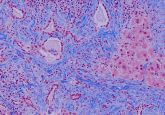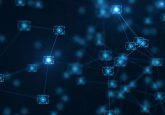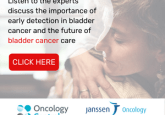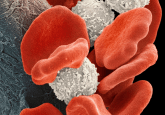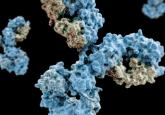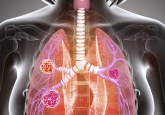Uncovering the link between cancer disparities and climate change
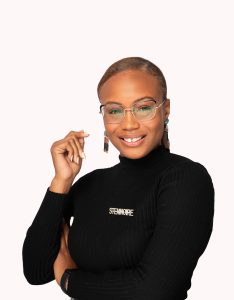 Hello, and welcome to the latest episode of OC Talks, the podcast from Oncology Central. Today, I’m joined by Dr Kilan Ashad-Bishop, who is a principal scientist at the American Cancer Society and co-founder and Executive Director of STEMNoire. Her work focuses on the intersection between science, health, and society. Thank you for joining us today.
Hello, and welcome to the latest episode of OC Talks, the podcast from Oncology Central. Today, I’m joined by Dr Kilan Ashad-Bishop, who is a principal scientist at the American Cancer Society and co-founder and Executive Director of STEMNoire. Her work focuses on the intersection between science, health, and society. Thank you for joining us today.
Could you briefly introduce yourself and give us an overview of your career to date?
Absolutely. My name is Dr Kilan Bishop. I am a California girl who made her way out of California to start pursuing biology. That looks like earning my Bachelor of Science from Morgan State University (MD, USA), which is a historically black college in Baltimore, Maryland, and then making my way down the coast to the University of Miami (CA, USA), to earn my PhD in cancer biology.
From there, I started to realize that I wanted to be more in the community than I wanted to be in the mouse room, even though I really liked the wet lab science and bench science. So, my training started to reflect that. I did some studying in education, in human development, and then cancer disparities and equity and kind of now pulled from all of those experiences and work as a cancer epidemiologist at the American Cancer Society. That’s been really cool. It’s an extension of my work looking at socio-environmental determinants of cancer disparities I work on the cancer risk factors and screening team looking at behavioral risk factors like tobacco use and obesity, as well as cancer screening participation.
Could you explain the link between cancer disparities and climate vulnerabilities?
Essentially, we have — because of the way that our society, I mean, I could say American society is set up, however, these same things are present in different societies globally, we have systems that are set up that do not serve all people equally. Therefore, disparities in cancer and other health conditions come about because these systems are set up to be unequal, which is going to distance people from things like health care.
It’s going to put people in close proximity to tobacco outlets and that’s before we even get to the predatory marketing of tobacco, in communities like mine, African-American communities. So you have all of these inequities in society, that coalesce to create cancer disparities and many of those same things coalesce to render communities of color as well as low-income communities, disproportionately vulnerable to the negative effects of climate change. You have communities where there’s historic disinvestment, you don’t have a lot of greenery.
Then as the world gets hotter and hotter and hotter, the heat is concentrated in those communities. Those may be the same communities where because of the lack of greenery, you don’t have as much neighborhood walkability leading to less physical activity, which is a risk factor for cancer. So it’s like talking in circles because you start to realize that a lot of these things that create vulnerability to one thing also create vulnerability to another thing and that’s that relationship at its base between climate and cancer.
 How does air pollution trigger cancer in non-smokers?
How does air pollution trigger cancer in non-smokers?
Discover the mechanism by which tiny pollutant particles may trigger lung cancer in individuals who have never smoked.
There’s also been an extremely salient body of work, actually an important body of work emerging to look at the effects of climate-related disasters, on access to health care, on continuity of treatment. Work by Leticia Nogueira, who also is at the American Cancer Society, has found links between wildfire smoke exposure and cancer mortality. So there are really implications for climate change across the cancer continuum from prevention and control, all the way to mortality and survivorship.
What downstream impact does this have on access to screening (including prevention and diagnostics) and treatment options for cancer patients?
When you’re thinking about climate change, sometimes it’s easy to think about it as something that won’t have effects for 20−30 years.
A lot of the ways that we talk about climate focuses on long-term impacts but even if you take that lens, there are environmental exposures and disparities in environmental exposures that have been documented for decades. So then today is when we should be looking. In the US, that plays out in places like Cancer Alley in Louisiana, where you have a really strong concentration of environmental pollutants, and that was on purpose.
Then you see increases in cancer incidence and, unfortunately, in those areas, you don’t always see the appropriate level of investment in screening campaigns, and education and outreach campaigns to let people know that because they are at greater risk, they may want to make sure that not only that they are up-to-date with screening, but even seek additional care. It’s kind of like, if you see something, say something, right? So there’s a downstream effect that’s indirect where we have screening guidelines, there are several different sets of screening guidelines in the United States and globally for different types of cancers but those are often not related to an individual’s level of risk. The screening that correlates to your level of risk is something that you can really only work out with your doctor if you have the usual source of care, which many people don’t.
That’s how we get those disparities in people knowing when they’re eligible, people knowing when they’re up-to-date, and people knowing that sometimes even if you’re up-to-date that still warrants an additional checkup or an additional interface with the healthcare system if something comes up.
You recently took part in a roundtable discussion titled Black in Cancer Research and Oncology. What were the key takeaways?
I think some of the key takeaways from that panel were the fact that, firstly, every person who participated has a personal story, and that personal story is reflected in their research and advocacy work.
I think so often as scientists we’re told that, like, science is something objective, and so theoretically we should all be doing science, conducting science, or interpreting science the same way. But that’s not real. That’s not real life.
We all have different identities and stories, and they affect the way that we work. And sometimes they can affect the way that we work in really positive ways, in ways that expand the ways that we approach inquiry and like I said, interpretation of those results.
The other key takeaway was just that sometimes, representation or the presence of black voices, is not enough. It’s the volume of black voices that has to be accounted for. So in many of the training environments that exist for people to become in a formal sense, real scientists, with my air quotes, there’s not always space to voice what ways you are comfortable or uncomfortable, with the material being imparted to you, space to feel like maybe you have an opportunity or not to push back on certain things that are being taught or to ask those additional questions that are really influential to training.
So, there was a shared desire to raise the volume of black voices, not only in formal training environments but also as we think about community education and outreach to have a workforce that is reflective of the people who are the most burdened by cancer and other chronic diseases, so that we can really start to make our way to rebuilding some trust in medical care and our health care systems and start to address these disparities.
Is that where your motivation came from to start STEMNoire?
Yes I co-founded STEMNoire in 2019 with another scientist Teressa Alexander, who I met at Morgan State. Now, I’m a biologist, she’s way smarter than me, she’s a physicist. And, I’m an American Black woman, she was an international student from Trinidad and Tobago.
Despite the fact that we had these really different backgrounds and really different research interests, as we stayed in touch and stayed friends and went into different training environments and earned different degrees, we started to see that the similarities were just way more prominent than the differences, in the ways that we felt in certain environments and the things that we honestly felt that we were lacking in certain environments.
So we created STEMNoire because we wanted to have a space that was curated for us, and by us, to not only enhance our professional outcomes, which you find a lot of support for but also to enhance our personal well-being in a holistic way, so that we’re not in the room at the expense of ourselves.
Can you tell us about the upcoming STEMNoire conference?
Absolutely. So just to go back, STEMNoire is a research and wellness community for Black Women in Science, Technology, Engineering and Math. We serve a global community of approaching 2,500 women.
We’re really proud that we’ve been able to bridge those different geographies and fields, training and experiences. To date, we’ve hosted three conferences, two virtual, and one in person in San Juan, Puerto Rico. For STEMNoire 2024, which is June 20−23rd 2024, we will be in Washington D.C. (USA). We’re excited to bring together our community for a phenomenal lineup of keynote speakers, personal and professional development workshops, as well as research presentations and opportunities to network and collaborate.
We have all of that information after STEMNoire 2024 on our website, which is stemnoire.org. Or you could find us on social media for a little more of the fun stuff.
What concept in oncology research are you most excited about?
That’s a really good question. I’m really interested in bodies of work that look at intersectionality in oncology outcomes. I have a mentor who is a vanguard in structural racism and considering how structural racism patterns health disparities — but I’m a black woman, so, yes, it’s racism, but it’s also sexism and misogyny and patriarchy. Then there are also people who deal with discrimination based on nationality. There are also people who deal with discrimination based on sexual and gender identity.
I’m really excited about people who are creating innovative ways to study outcomes at the intersection of people’s identities, and about the work to create interventions that are highly personalized to communities in which we have seen persistent health disparities, so trying something new and exciting.
Interviewee profile:
Dr Kilan C. Ashad-Bishop (she/her) is a biomedical scientist and advocate for inclusion working at the intersection of science, health, and society. She is a proud alumna of Morgan State University, where she earned her Bachelor of Science in Biology, and the University of Miami, where she earned her Ph.D. in Cancer Biology. Currently a Principal Scientist at the American Cancer Society, Kilan focuses her transdisciplinary research and service portfolio on the influence of social and environmental factors on cancer disparities.
Guided by a strong belief in the transformative power of equity and inclusion in health, science, and society, Dr Ashad-Bishop champions the responsibility of science (and scientists) in driving positive social change. In 2019, she co-founded STEMNoire, a research and wellness community that supports and empowers Black women in STEM. With a global reach, STEMNoire has rapidly expanded to serve a vibrant community of 2,500 Black women in STEM education and the workforce, providing resources for holistic wellness, collaborative networking, and personal and professional development.
Beyond her professional pursuits, Kilan finds joy in spending time with her pets and tending to her thriving collection of houseplants. Additionally, she cherishes moments spent in nature and the gym.
The opinions expressed in this article are those of the author and do not necessarily reflect the views of Oncology Central or Taylor & Francis Group.
